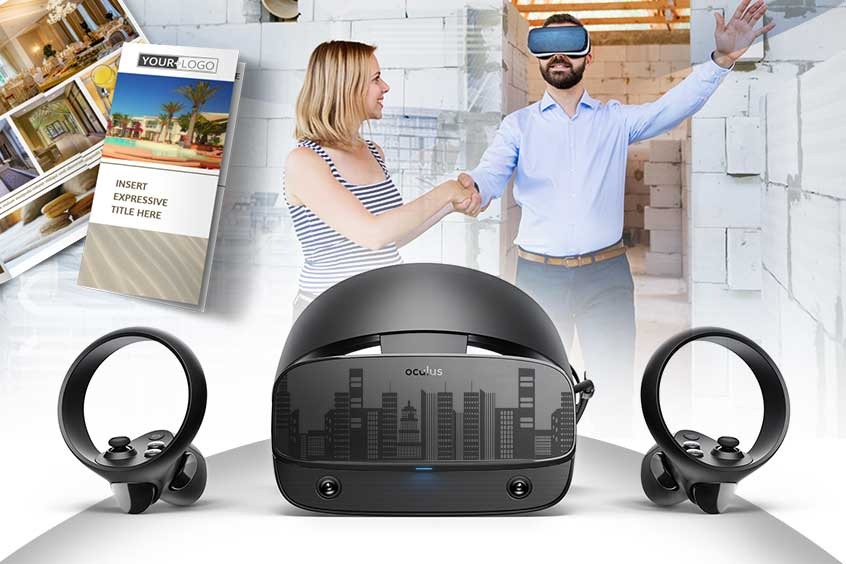
Real Estate business has a very simple ideology. Builders, Developers raise a property, and realtors or agents work towards finding buyers for it. Although this has been the accepted process, a game changer always has to enter.
Virtual reality is the trump card that’s revolutionizing the ways of the real estate industry, once and for all. VR allows property seekers experience what they are going to get sitting in their homes. It is much more efficient for the real estate agents too, as they can literally carry around the property experiences with them and visit the clients, rather than go through the hassles of taking the clients for property visits. As per the last survey by the National Association of Realtors (NAR) – “95% of the clients search for properties on the internet…and 88% of online property seekers end up buying a property through an agent.”
So, in this visibly changing market, adapting to new technology is essential for an industry, especially real estate. Segueing to our topic of the blog, here’s how Virtual Reality can benefit Realtors.
List of points:
- 1. Virtual Showcase
- 2. Virtual Staging
- 3. Architectural Visualization
- 4. Virtual Modifications
1. Virtual Showcases
Before finalizing on a property, a client has to go through multiple property visits. This can be very tiresome, time consuming and hectic. Also, it does not fail to be expensive either on the realtor or the client’s pockets.
VR is the straight solution to these issues. By simply wearing a VR headset, a person can enter the virtual world and experience three-dimensional walkthroughs or presentations of practically anything; in our case, real estate. So, an agent or realtor can very conveniently give the client a 3D walkthrough of the property(s) before the client decides if it is important to visit in person or not.
2. Virtual Staging
A very similar concept to Virtual Showcase, Virtual Staging is what can convert a potential buy into a real transaction. Showing an empty, unpainted property and showing a nicely decorated property with furniture can make all the difference. The client needs a home or an office; the property should feel like it.
No matter how much effective might it be, staging can cost the realtor big bucks. Here, VR comes to rescue and provides a very cost-effective solution by virtually staging the property.
3. Architectural Visualization
How do you sell a property that hasn’t been constructed yet? This question has bugged realtors for decades, if not centuries. In the present times, we see 3D models of the property that give us an idea of what it would look like, once completed. Creating the interiors & exteriors of the property in 3D can take a lot of investment. VR on the other hand has turned architectural visualization into a much affordable option. VR can be used to show exteriors as well as interiors of properties that have not been erected for the client to have a clear idea of what to expect.
4. Virtual Modification
No matter how much you stage a property, it cannot please everyone. Every client will their own taste and would like to see the property interior in their desired form. Now, imagine a virtually staged property where clients can make their desired changes in the interior, or they can purchase the virtually staged furniture. These will boost the selling quotient of a property to another level.
So,let us focus on what Virtual Reality provides you as a gain –
a) It builds an emotional connection between the property and the client. The property becomes much more than a capital asset to the client, as it gives the essence of living in the property way before it is even built.
b) It saves a lot of time for both the realtor and the buyer. VR cuts down the hassles of visiting the site/property and hopping between them.
c) It also saves a lot of money along with time. Developing 3D visualizations, taking clients on property visits, staging a property etc. costs a lot to the realtor. While VR can solve all of them at one go.
d) It is not limited by global boundaries. VR does not require physical presence of a person. As long as the person owns a VR headset, the possibilities with VR are limitless.
Virtual reality is surging ahead on its quest to conquer the real estate industry. Simple VR, like 360-degree video and images, are accessible to any realtor. When it comes to more submerge and up-standard VR experiences, there are some firms that can help realtors in the matter.
Anderson helps you develop complete VR experiences that can make your real estate come alive. The services are not just limited VR but spread beyond. With augmenting print your audiences can interact, and keep themselves immersed as well as engaged.
If you want to keep on reading about virtual reality & augmented reality, keep following our blogs.